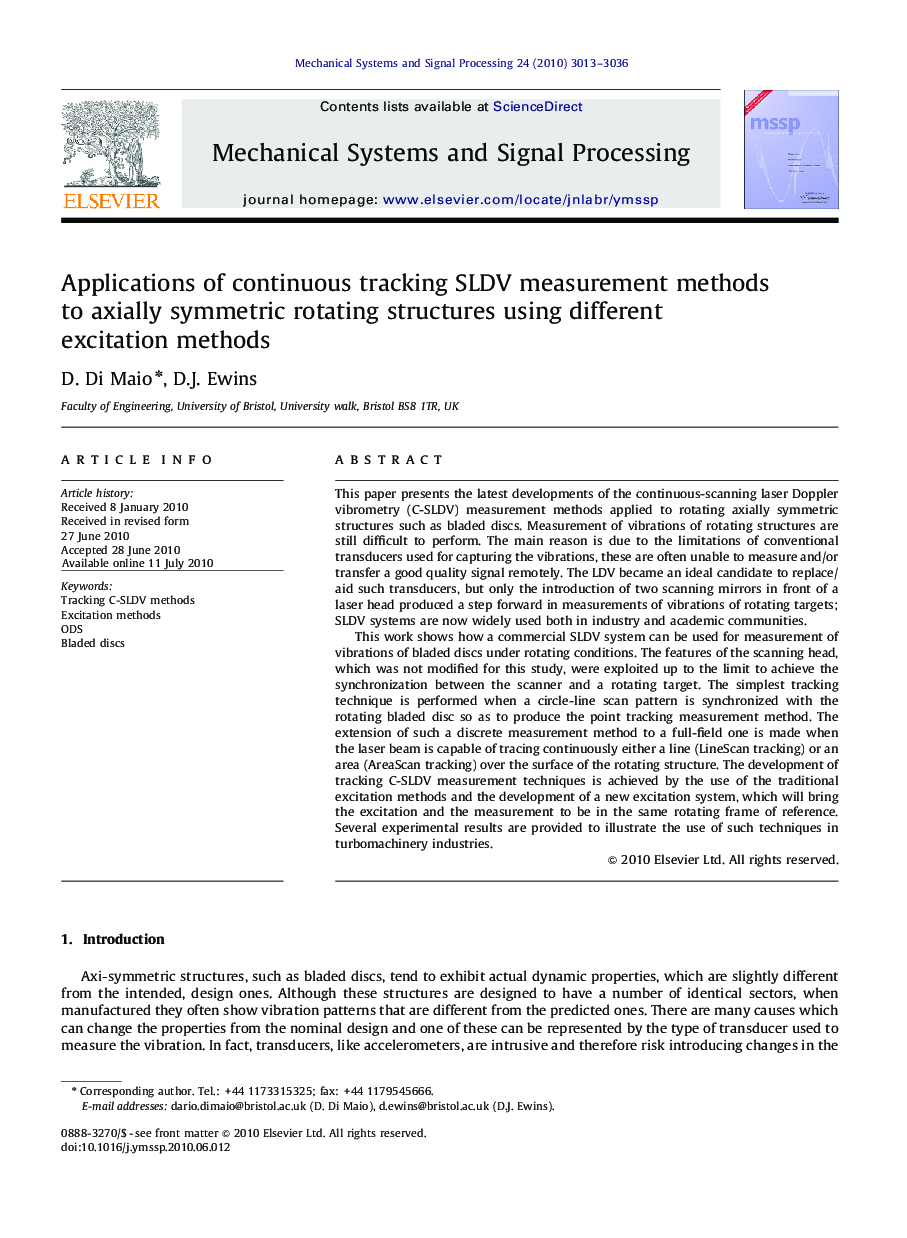| Article ID | Journal | Published Year | Pages | File Type |
|---|---|---|---|---|
| 565645 | Mechanical Systems and Signal Processing | 2010 | 24 Pages |
This paper presents the latest developments of the continuous-scanning laser Doppler vibrometry (C-SLDV) measurement methods applied to rotating axially symmetric structures such as bladed discs. Measurement of vibrations of rotating structures are still difficult to perform. The main reason is due to the limitations of conventional transducers used for capturing the vibrations, these are often unable to measure and/or transfer a good quality signal remotely. The LDV became an ideal candidate to replace/aid such transducers, but only the introduction of two scanning mirrors in front of a laser head produced a step forward in measurements of vibrations of rotating targets; SLDV systems are now widely used both in industry and academic communities.This work shows how a commercial SLDV system can be used for measurement of vibrations of bladed discs under rotating conditions. The features of the scanning head, which was not modified for this study, were exploited up to the limit to achieve the synchronization between the scanner and a rotating target. The simplest tracking technique is performed when a circle-line scan pattern is synchronized with the rotating bladed disc so as to produce the point tracking measurement method. The extension of such a discrete measurement method to a full-field one is made when the laser beam is capable of tracing continuously either a line (LineScan tracking) or an area (AreaScan tracking) over the surface of the rotating structure. The development of tracking C-SLDV measurement techniques is achieved by the use of the traditional excitation methods and the development of a new excitation system, which will bring the excitation and the measurement to be in the same rotating frame of reference. Several experimental results are provided to illustrate the use of such techniques in turbomachinery industries.
